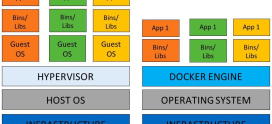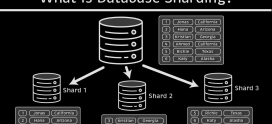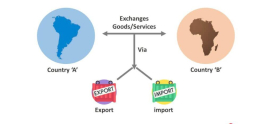
How CDNs Support Large File Downloads and Software Distribution
In today’s digital world, we often find ourselves grappling with downloading large files or software updates. It can be incredibly frustrating to wait for what feels like an eternity, especially when you’re eager to get started on a new game, update software, or download that hefty work file. Sound familiar? You’re certainly not alone! Many people share your pain of slow downloads and unreliable connections. But what if there was a way to make this process faster and smoother?
Enter Content Delivery Networks (CDNs)—the silent heroes of the internet that play a vital role in how we access heavy files and software. Imagine wanting to bake a cake. If you had to source every ingredient from one faraway store, it could take forever. Instead, wouldn’t it be easier to have multiple stores in your area, each supplying what you need at lightning speed? That’s essentially what CDNs do for internet downloads. They bring downloads closer to you, making large files appear at your fingertips in record time.
In this article, we will explore how CDNs support large file downloads and software distribution while addressing your concerns about efficiency and speed. Let’s dive in and discover how CDNs can transform your downloading experience!
What Is a CDN and How Does It Work?
A Content Delivery Network (CDN) is a network of servers distributed across various geographical locations. The primary purpose of a CDN is to deliver content—like large files and software—efficiently to users. When you initiate a download, the CDN redirects your request to the nearest server holding the data you want. This minimizes the distance the data has to travel, which, in turn, decreases loading time.
Key Benefits of Using CDNs for Large File Downloads
So why should you care about CDNs? Here’s a look at the benefits that make them indispensable when it comes to downloading large files:
1. Speed and Performance
CDNs significantly reduce download times by caching content closer to users. This means that instead of fetching large files from a single origin server that might be hundreds or thousands of miles away, your request is redirected to a nearby server. Studies indicate that utilizing CDNs can cut loading times drastically—sometimes by up to 50%!
2. Reliability
Ever experience that sinking feeling when a download fails midway? CDNs enhance reliability by distributing file hosting across multiple servers. Should one server go down, your download is redirected to another, ensuring you can access your files without hiccups.
3. Scalability
As your needs grow, so too can your CDN services. Many CDNs can easily accommodate spikes in download requests, such as when a new software version is released or during peak gaming hours. CDNs can seamlessly manage increased traffic without causing slowdowns.
4. Security
CDNs can bolster security with features like data encryption and firewalls. This makes downloading files a safer experience, as they help to protect against Distributed Denial of Service (DDoS) attacks that can cripple your downloading process.
Real-World Application: Case Study of a Game Developer
Let’s consider a popular game developer, XYZ Gaming, which recently released a major update that included new features and bug fixes. Historically, their servers would become inundated with download requests, leading to longer wait times. However, after incorporating a CDN into their distribution strategy, they saw remarkable improvements. Players around the world accessed downloads through local servers, reducing strain on any singular server and resulting in a smoother, faster experience. By employing a CDN, they not only enhanced user satisfaction but also increased the number of concurrent downloads during peak times.
Choosing the Right CDN for Your Needs
With various CDN options available, how do you know which one suits your needs best? Here are some key factors to consider:
1. Coverage
Look for a CDN provider with a robust network of servers spread globally. More servers mean less distance for your data to travel, which translates to speed.
2. Performance
Before making a decision, check the historical performance metrics of the CDN. Look for providers that boast low latency and high uptime statistics.
3. Security Features
Ensure your chosen CDN offers strong security features like DDoS protection and encryption services. Security should never be an afterthought!
4. Customer Support
Good customer support can save you a lot of headaches. Choose a provider that offers 24/7 support so that any issues can be addressed quickly.
Incorporating CDNs for Software Distribution
Software distribution can significantly benefit from CDN implementation, especially when regular updates are required. Here’s how:
1. Faster Downloads for Updates
When software companies push updates, users often face downtime. With a CDN, the download process is expedited, enabling users to update in a fraction of the usual time.
2. Load Balancing
CDNs can distribute the load across multiple servers, ensuring no single server is overwhelmed. This enhances the ability of software companies to deliver critical updates without interruptions.
3. Global Reach
Using a CDN means that even users in remote areas can have access to software updates quickly and effortlessly. It helps bridge gaps in connectivity and availability.
Common Misconceptions About CDNs
Despite their effectiveness, some misconceptions surround CDNs. Let’s dispel a few:
1. CDNs Are Expensive
While there can be costs associated with employing CDNs, many options exist that cater to a variety of budgets. It’s essential to weigh the potential returns against the investment.
2. Only Large Companies Need CDNs
CDNs can benefit businesses of all sizes. Even small startups can use them to enhance their service delivery, especially if they’re dealing with downloadable content.
3. They Are Only for Websites
Many people think CDNs are solely for website hosting. In reality, they are instrumental in the distribution of large files, software, video streaming, and more.
FAQs
What exactly is a CDN?
A Content Delivery Network (CDN) is a system of distributed servers that work together to deliver content to users more efficiently, improving download speeds for large files or software.
How does a CDN improve download speeds?
A CDN reduces download times by caching content on servers closer to the user, minimizing the distance data has to travel.
Are CDNs secure?
Yes, many CDNs offer robust security features, including DDoS mitigation and encryption to protect data during downloads.
Can small businesses benefit from CDNs?
Absolutely! Small businesses can leverage CDNs to improve service delivery and provide fast downloads to their users.
How do I choose the right CDN for my needs?
Consider factors like coverage, performance metrics, security features, and customer support when selecting a CDN provider.
Can CDNs help with software distribution?
Yes, CDNs can drastically enhance the distribution of software updates, ensuring quicker downloads and less downtime for users.
What should I look for in CDN pricing?
Look for transparency in pricing, features Offered, and any potential overage fees. Consider the overall value for the services provided and how they align with your budget and needs.









